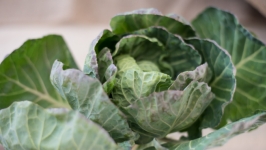A Case for Eating Insects
Is it time to put aside America’s cultural squeamishness and broaden our palates to include bugs as a source of protein? Or is this too much of an ick factor for you? It may seem gross, we know, but in many food cultures worldwide, entomophagy (the consumption of insects) is already part of the daily diet for more than 2 billion people. With over 1,900 edible species, bugs may be a way to address the need to feed the planet's growing population.
The most commonly eaten bugs - beetles, caterpillars, bees, wasps and ants - are loaded with protein, fiber, essential amino acids, omega-3 fatty acids and vital minerals, as much or more than many other food sources. Mealworms, for instance, provide as much protein, vitamins and minerals as fish and meat, while the protein content of grasshoppers is equivalent to lean ground beef, with less fat per gram.
From an environmental perspective, growing insects requires much less land than raising cows, pigs and sheep. They also emit considerably fewer greenhouse gases than most livestock. If we are to feed more than 9 billion people, the widespread practice of using chemicals to kill grasshoppers and locusts on crops might not make sense in the long run; insects are high in lean complete proteins, whereas the crops being protected from insects (such as millet, wheat, barley and maize) are not.
And guess what? You are probably already eating bugs and don’t realize it. As per the FDA’s Defect Levels Handbook, there are acceptable limits of insect fragments in food, considered "natural or unavoidable defects.” For instance, the hops used in beer can have 2,500 aphids per 10 grams and 3.5 ounces of peanut butter can have up to an average of 30 insect fragments.
American diners have already adopted other cultures' culinary specialties. Eating raw fish was not always a popular dining option but sushi has become a U.S. favorite. We eat crabs, shrimp and lobster, which are, like insects, arthropods. It may not be long before you see escamoles (edible ant larvae) on a plate near you.
















